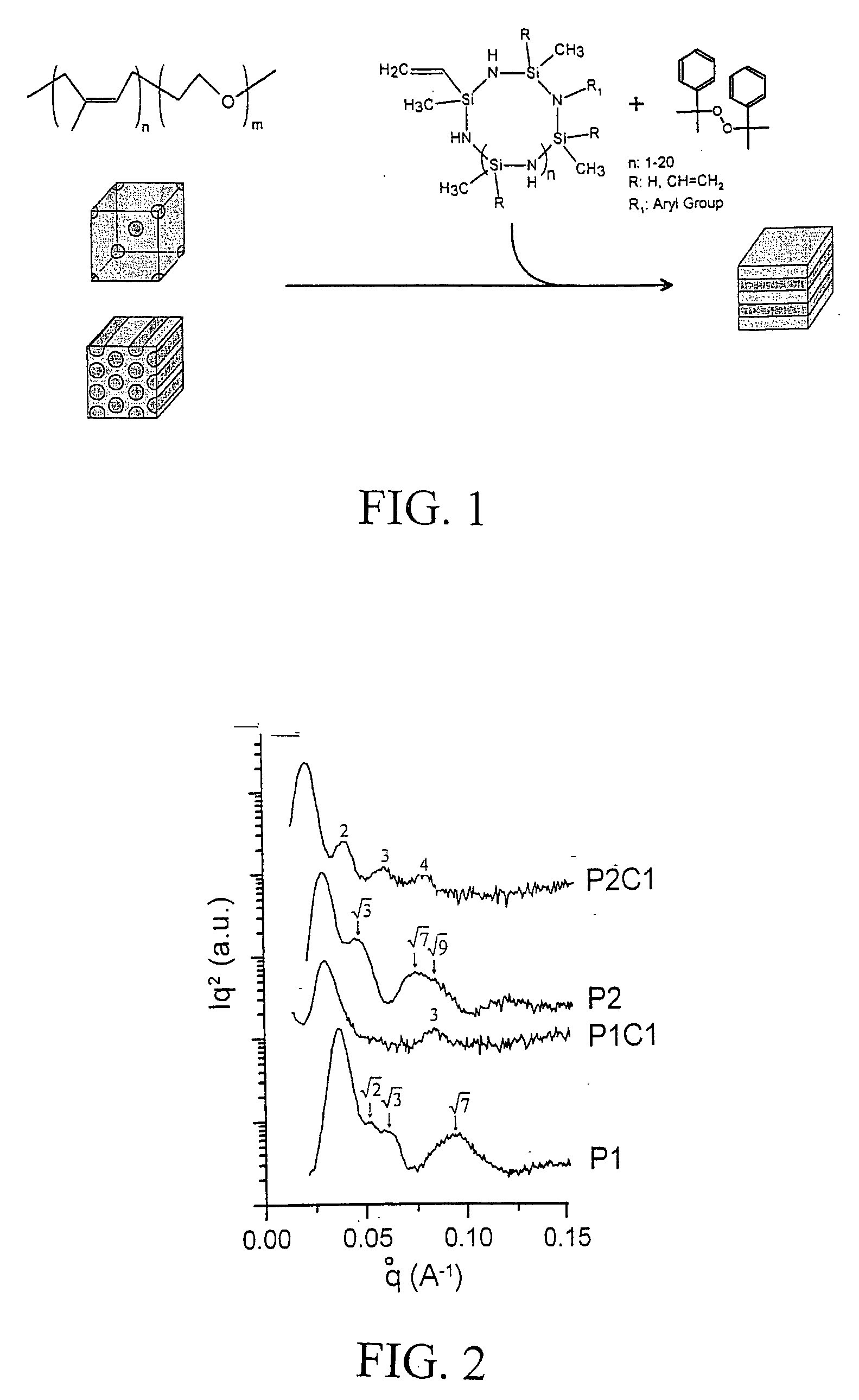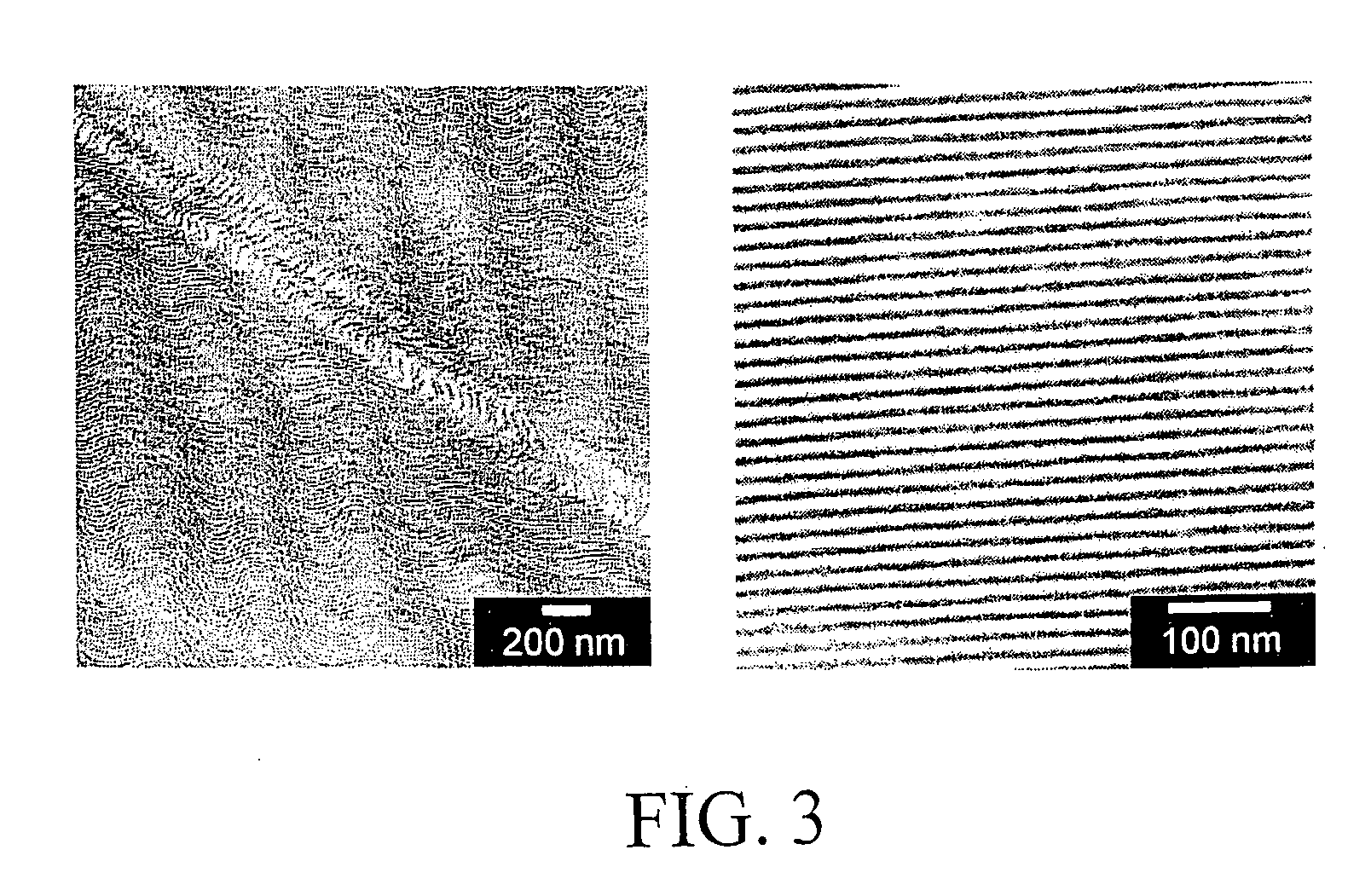High temperature SiCN and SiC-type nanostructured ceramic material from block copolymer mesophases
a nano-structured ceramic and copolymer technology, applied in ceramics, metal cyanides, other domestic articles, etc., can solve the problem of challenging control of the structure of ceramic materials at the nanometer length scale, and achieve the effect of simple and easy control pathway
- Summary
- Abstract
- Description
- Claims
- Application Information
AI Technical Summary
Benefits of technology
Problems solved by technology
Method used
Image
Examples
Embodiment Construction
[0013] By selecting a block copolymer as a structure directing agent having one block chemically compatible with a polymer derived ceramic (PDC) precursor, a nanostructured composite material is accessible through a cooperative self-assembly of the PDC precursor and the block copolymer. The PDC precursor is preferably a silazane, most preferably a silazane commercially known as Ceraset, a ureamethylvinylsilazane. A nanostructured composite material exhibiting, e.g., a lamellar morphology is prepared by polymerizing the PDC precursor using radical initiation after mixing of the block copolymer and the PDC precursor. This method of cooperative self-assembly can be extended to a variety of different mesophases by either decreasing or increasing the fraction of PDC precursor added thus making nanostructured composite materials of different morphologies accessible. Furthermore, subsequent calcining of the nanostructured composite materials leads to nanostructured non-oxide ceramic materi...
PUM
| Property | Measurement | Unit |
|---|---|---|
| Temperature | aaaaa | aaaaa |
| Temperature | aaaaa | aaaaa |
| Polarity | aaaaa | aaaaa |
Abstract
Description
Claims
Application Information
 Login to View More
Login to View More - R&D
- Intellectual Property
- Life Sciences
- Materials
- Tech Scout
- Unparalleled Data Quality
- Higher Quality Content
- 60% Fewer Hallucinations
Browse by: Latest US Patents, China's latest patents, Technical Efficacy Thesaurus, Application Domain, Technology Topic, Popular Technical Reports.
© 2025 PatSnap. All rights reserved.Legal|Privacy policy|Modern Slavery Act Transparency Statement|Sitemap|About US| Contact US: help@patsnap.com


